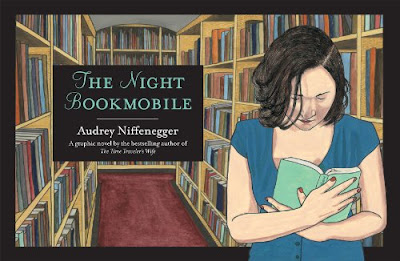I have had a very busy week! I do have a knitting project to share but haven’t had a chance to take pictures, so for now I will regale you with tales of a library conference.
This past weekend I attended the
NELA Annual Conference, which I always enjoy, but now I’m on the conference planning committee so it's a rather different experience. Happily, I still had a great time! Here are a few of the highlights:
Joe Raiola from Mad Magazine was the Sunday night banquet speaker. His talk, The Joy of Censorship, was hilarious, inspiring and full of swear words. Apparently a few people walked out, but most of the reviews seemed favorable. I thought he was a riot!
Reader’s Advisory 101: Ok, I’ll admit that this program was my idea, but it was a damn good idea. Librarians hardly ever learn about this anymore, and I think it’s a good balance to all our programs on technology, marketing, and other non-book topics. The presenter was from the
Wake County Public Library in NC where they do not purchase music or movies; their mission statement is to foster the love of reading and they take that seriously. They have an awesome
Book-a-Day blog.
Paddling Her Own Canoe: Louisa May Alcott in Literary History. I love any program about books or authors, so this was right up my alley. The Alcott family was fascinating and eccentric! I’m ashamed to admit that I’ve never read Little Women, but I will now.
Marilyn Johnson, author of
This Book is Overdue, spoke at a luncheon and was really fantastic. I haven’t read her book yet either, but I plan to. She’s a great speaker and an enthusiastic supporter of libraries. She’s passionate, funny, and kind of adorable.
There were also two programs that I was responsible for planning. One was a panel session on job interview strategies, which went very well and actually went overtime because there were so many questions. The other was a more general session on job hunting, presented by the instructors of an
online class I took from Simmons GSLIS last fall. It was great to finally meet them in person, and they clearly put a lot of time and effort into their presentation. The turnout was low, probably because of the time slot, but I feel it was a success.
I also enjoyed programs on team-building, outreach to foster teens, marketing, and I got to play with some ebook readers which is resulting in some nook-related fantasies.
Being on the planning committee was a great way to influence the conference offerings and to meet other librarians. It was a great group to work with and because of the large size of the committee, each of our jobs was small enough to be quite manageable. I’ve signed on again for next year, which will be held in one of my favorite places, Burlington, VT!
 Lowboy is Will Heller, a mentally ill teenager who is off his meds and wandering through the NY subway system in a conquest to stop global warming by finally having sex. His mother, an Austrian immigrant who he calls Violet, is working with police officer Ali Lateef to track him down before he causes harm. Though he is not especially violent, he once pushed his best friend Emily on the subway tracks in Union Station.
Lowboy is Will Heller, a mentally ill teenager who is off his meds and wandering through the NY subway system in a conquest to stop global warming by finally having sex. His mother, an Austrian immigrant who he calls Violet, is working with police officer Ali Lateef to track him down before he causes harm. Though he is not especially violent, he once pushed his best friend Emily on the subway tracks in Union Station. 















































